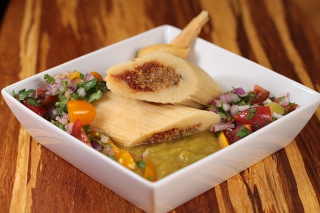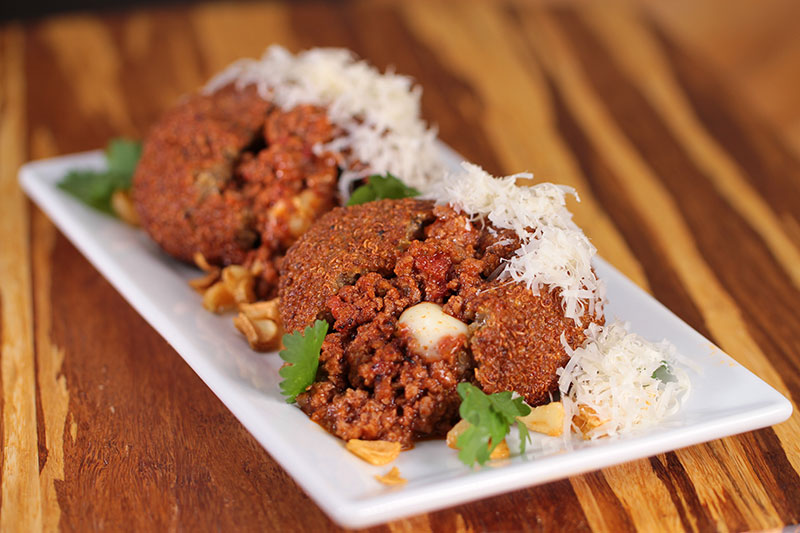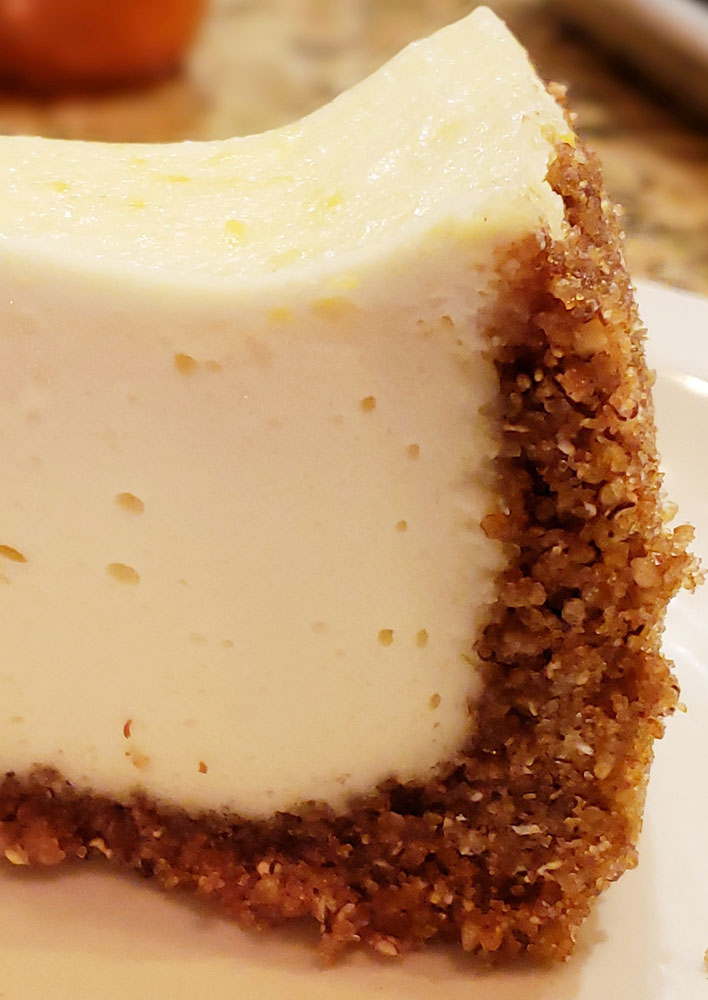
Using Grains in Applications from Smoothies to Desserts
29 March 2019Chef Jason Gronlund of Ardent Mills explains how to include grains with their great flavor, color and texture into unusual applications while adding interesting ingredient and origin stories.
By Lisa Parrish, GMC Editor
 I recently interviewed Chef Jason Gronlund, technical sales manager foodservice, at Ardent Mills, by email and asked how to add grains into applications beyond pizza, traditional breakfast options and baking. He said that the sky’s the limit when deciding how and when to add grains to applications from breakfast to dessert.
I recently interviewed Chef Jason Gronlund, technical sales manager foodservice, at Ardent Mills, by email and asked how to add grains into applications beyond pizza, traditional breakfast options and baking. He said that the sky’s the limit when deciding how and when to add grains to applications from breakfast to dessert.
A few of his suggestions included: fried barley or quinoa tots, barley bowls, grain smoothies, savory jerky granola bars, popped sorghum with crispy quinoa snack mix, and quinoa and amaranth crisps ground to create a graham-cracker crusts.
How and why would you suggest chefs incorporate grain-based-foods into menu items that appear in all dayparts?
There’s really no limit to using grains. At The Annex by Ardent Mills™ we are showing chefs ways to think beyond using grains just for baking and side dishes. Different grains and grain formats have a role in creating both indulgent and healthful dishes. For instance, we’ve been developing different encased and fried treats with mixed grains. Great Plains Quinoa, with its higher amylopectin, works really well with rice in cheese-stuffed arancini. “Tot” types snacks and falafel also translate well when using grains like barley or quinoa. You can even sneak greens and other veggies into grain tots. I like them dusted with spices and served with different dips.
Individually quick-frozen (IQF) grains are great in soups, chilis and stews, grain salads and dishes like sopas and tamales. I also love to work with barley. People are looking for convenient meals that keep them full and give sustained energy. Barley is great for that. Try serving quinoa-barley bowls that can be topped the same way that rice or noodle bowls can be topped. You can go with Asian, Latin, Tex-Mex flavors or curries.
I’ve developed Beef and Barley Rolls, where I use the Sustagrain Barley and blanched the rolls so that they can be finished with a microwave and air impingement kitchen technology, creating a crispy brown finished product without the amount of fat you would get in a full fry. This allows the flavor and all the health benefits of the Sustagrain Barley to shine through. Delivering a healthful dish is not just about the ingredients you use, it’s also about using the best kitchen technology and techniques.
IQF grains can be put in a high shear mixer, like the ones used in smoothie places, to boost fiber and nutritional benefits in blended drinks, so that smoothies can be more viable meal replacers. We’ve found that the IQF blend so well that they have no graininess and add bulk, giving a feeling of fullness for longer.
What are your favorite (or unusual) savory applications that utilize grains? Why do these top your list?
We’ve done some work using grains in sausages, such as “English Barley Bangers.” I even use grains in jerky. Ardent Mills sees big opportunities to bring more savory flavors to typical grab-and-go snacks, like granola bars. I would love to see bars that include spices, salt and small jerky pieces as well as quinoa puffs, nuts and other crunchy elements for a slightly sweet, savory, high-protein snack.
As a breading or coating, the crunch, color and texture of whole grains add a point of differentiation that panko, bread crumbs, and traditional batters cannot come close to. Working for The Annex, my eyes have been opened to these unique products, and I’ve seen grains can deliver a WOW factor that chefs and consumers crave.
 Can you discuss the texture benefits of adding more grains to a variety of applications?
Can you discuss the texture benefits of adding more grains to a variety of applications?
Texture is so important in eating. Ancient grains can add different dimensions - some chew, some crunch, some crispiness. Grains like sorghum can be “popped” like a smaller version of popcorn, with similar flavor and higher fiber. A cluster of popped sorghum would be great in a snack mix. Puffed and crispy quinoa has already made its ways into snack bars and chocolate “thins” or “bark,” and we predict more crisped grains will be used in the “healthy indulgence” category.
What is the difference between ancient and heirloom grains?
Working with foods that have a long history and have nearly disappeared is interesting and rewarding for chefs. From tomatoes to the Balinese Long Pepper and White Sonora Wheat, these ingredients deserve our attention.
In terms of ancient grains, heirloom grains and heritage grains, there are no official definitions. According to Scott Baker, Sr. Scientist-Grain Innovation at Ardent Mills, for wheat, we look back into the historic timeline and basic genetic composition to determine what is an heirloom wheat. He explains that ancient wheats such as einkorn, emmer, khorasan and spelt wheat are the progenitors of heirloom/heritage and modern wheats. Their histories often go back thousands of years. Any wheats developed before the 1950-1960s are considered to be heirloom/heritage wheats. Wheat varieties developed after that time are considered to be modern wheat.
Likewise, there is no official definition of ancient grains, but the industry generally defines ancient grains as grains that have been largely unchanged over the last several hundred years. Our portfolio includes the Ancient Grains amaranth, quinoa, sorghum, millet and teff. Ardent Mills’ strong relationships with growers also gives us access to unique grains and the ability to grow many other varieties.
Can you discuss the benefits of cooking with gluten-free grains?
Many people are avoiding gluten for different reasons – diet, digestion, for example. Using an ancient grain mix of amaranth, buckwheat, millet, quinoa, sorghum and teff creates a gluten-free option that works well in most dough applications and can boost whole grain nutrition and fiber in traditional breads, pizza crusts and even some pastry. For example, we’ve worked with using 100 percent grain crisps for cheesecake crusts. I am testing this formulation to use quinoa and the amaranth whole, and it tasted great – just like graham crackers and with a unique texture. Grinding the grain crisps creates a closer if not exact mouthfeel and taste of an actual graham cracker, and it will be gluten free. We want more people to know that the gluten-free grains also have great flavors, colors and textures and add interesting ingredient/origin stories. They can be used in all the applications I described above – and much more.
